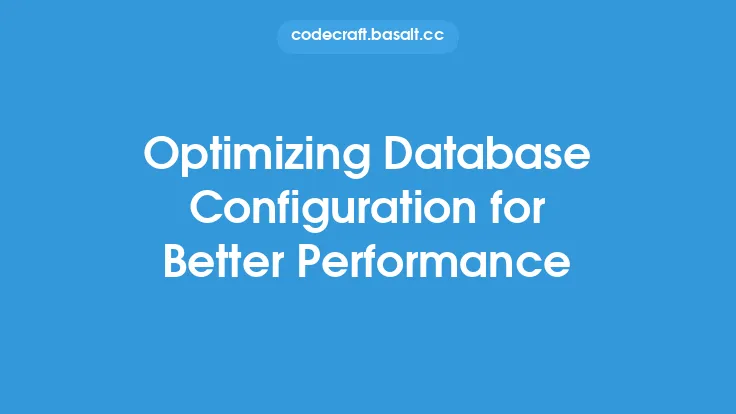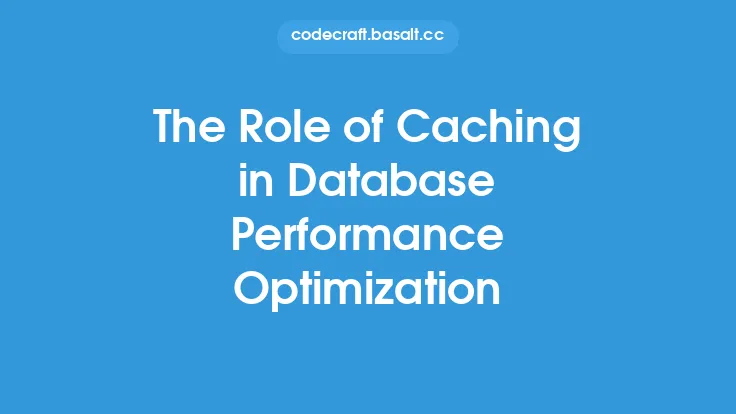Database transaction management is a critical aspect of database systems, playing a vital role in ensuring data consistency, integrity, and reliability. It involves managing multiple operations on the database as a single, all-or-nothing unit of work, known as a transaction. Effective transaction management is essential for maintaining database performance, as it helps to prevent data inconsistencies, reduces the risk of errors, and improves overall system reliability.
Introduction to Database Transactions
A database transaction is a sequence of operations performed on a database, which can include insertions, updates, deletions, and other data modifications. Transactions are used to ensure that database operations are executed as a single, atomic unit, meaning that either all or none of the operations are committed to the database. This ensures that the database remains in a consistent state, even in the event of failures or errors. Transactions are typically characterized by four properties: atomicity, consistency, isolation, and durability (ACID).
Transaction Management Techniques
There are several transaction management techniques used in database systems to ensure efficient and reliable transaction processing. These include:
- Locking mechanisms: Locking mechanisms are used to prevent concurrent access to shared data, ensuring that only one transaction can modify the data at a time. There are two types of locks: shared locks, which allow multiple transactions to read the data simultaneously, and exclusive locks, which prevent any other transaction from accessing the data.
- Transaction isolation levels: Transaction isolation levels define the degree to which a transaction must be isolated from other transactions. The most common isolation levels are read uncommitted, read committed, repeatable read, and serializable.
- Transaction logging: Transaction logging involves recording all changes made to the database during a transaction, allowing the database to recover in the event of a failure.
- Checkpointing: Checkpointing involves periodically saving the state of the database, allowing the database to recover quickly in the event of a failure.
Transaction Processing Models
There are several transaction processing models used in database systems, each with its own strengths and weaknesses. These include:
- Online transaction processing (OLTP): OLTP systems are designed to handle high volumes of short, simple transactions, such as those found in e-commerce applications.
- Online analytical processing (OLAP): OLAP systems are designed to handle complex, long-running transactions, such as those found in data warehousing applications.
- Hybrid transactional/analytical processing (HTAP): HTAP systems are designed to handle both OLTP and OLAP workloads, providing a single platform for both transactional and analytical processing.
Distributed Transaction Management
Distributed transaction management involves managing transactions that span multiple databases or nodes in a distributed system. This can be challenging, as it requires coordinating the actions of multiple nodes to ensure that the transaction is executed consistently across the system. Distributed transaction management techniques include:
- Two-phase commit protocol: The two-phase commit protocol involves a prepare phase, where each node prepares to commit the transaction, and a commit phase, where each node commits the transaction.
- Three-phase commit protocol: The three-phase commit protocol involves an additional pre-prepare phase, where each node checks whether it can prepare to commit the transaction.
Best Practices for Database Transaction Management
To ensure effective database transaction management, several best practices should be followed:
- Keep transactions short: Short transactions reduce the risk of conflicts and improve system performance.
- Use appropriate isolation levels: Choosing the correct isolation level can help to prevent conflicts and ensure data consistency.
- Use locking mechanisms judiciously: Locking mechanisms can help to prevent conflicts, but excessive locking can lead to performance issues.
- Monitor transaction performance: Monitoring transaction performance can help to identify bottlenecks and optimize system performance.
Conclusion
Database transaction management is a critical aspect of database systems, ensuring data consistency, integrity, and reliability. By understanding transaction management techniques, transaction processing models, and distributed transaction management, database administrators can design and implement effective transaction management strategies. Following best practices for database transaction management can help to improve system performance, reduce the risk of errors, and ensure reliable transaction processing.





